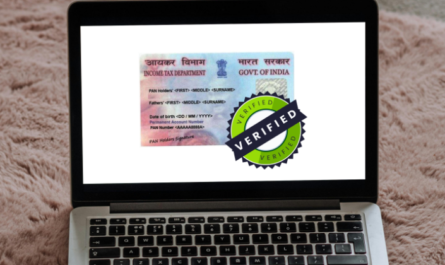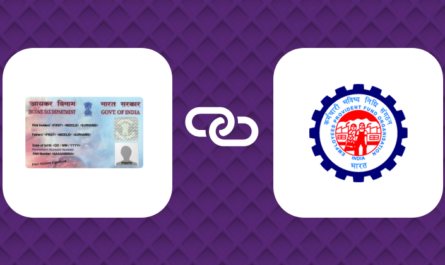In today’s complex financial landscape with runaway national debt, the concept of a monetary reset looms as both a potential solution to economic woes within our lifetimes and a source of uncertainty for many.
One of the most pressing questions for individuals, countries, and businesses alike is: what happens to existing debts when a monetary system undergoes a fundamental change in currency?
This article aims to demystify the impact of monetary resets on various forms of debt, providing a clearer understanding of what to expect and how to prepare.
Understanding Monetary Resets: What They Are and Why They Happen
A monetary reset is a significant overhaul of a country’s or region’s financial system, often involving introducing a new currency or a dramatic change in monetary policy. These resets typically occur in response to severe economic crises, such as hyperinflation or a collapse in confidence in the existing currency.
Historical examples include establishing the Bretton Woods system after World War II and various currency reforms in countries experiencing economic turmoil.
For the average citizen, a monetary reset can have far-reaching consequences, affecting everything from the value of savings to the burden of debt. It can reshape the economic landscape, presenting challenges and opportunities for individuals and institutions.
The Fate of Existing Debts: Conversion and Real Value Changes
During a monetary reset, existing debts don’t simply disappear. Instead, they are typically converted to the new currency at a predetermined exchange rate. While this means the nominal amount of your debt may remain the same, its real value can change significantly, especially if the reset is accompanied by high inflation.
Consider a scenario where you owe $10,000 on a loan. After a reset, you might still owe 10,000 units of the new currency, but if that new currency is worth less in real terms, your debt burden has effectively decreased. This concept of nominal versus real value is crucial in understanding how monetary resets affect debt.
Inflation’s Double-Edged Sword: Easier Payoffs vs. Economic Challenges
Inflation, often a critical factor in monetary resets, can be a double-edged sword regarding debt. On one hand, high inflation can make fixed-rate debts more straightforward to pay off over time. As the overall price level in the economy rises, the actual value of your debt decreases, assuming your income keeps pace with inflation.
However, there’s typically a lag between price increases and wage adjustments, creating significant economic stress for many individuals. Moreover, while inflation might make your existing debt more manageable, it can also lead to financial instability, potentially making it harder to secure new loans or maintain your standard of living.
Government Intervention: Potential Debt Relief and Capital Controls
During a monetary reset, governments often take extraordinary measures to stabilize the economy and manage the transition. These can include debt relief programs, such as partial forgiveness of student loans or mortgage modifications. However, it’s important to note that widespread debt cancellation, especially for private debts, is relatively rare.
Governments may also implement capital controls to prevent rapid money outflows and stabilize the new currency. While these measures can help protect the overall economy, they may also restrict individuals’ ability to move money across borders or access foreign currency to repay international debts.
Debt Types Matter: How Different Loans Fare During a Reset
Not all debts are created equal when it comes to monetary resets. Secured debts, like mortgages, often fare better than unsecured debts like credit cards. This is because secured debts are backed by physical assets whose value may adjust with inflation or currency changes.
Variable-rate loans may see more immediate impacts from a reset, as interest rates could change dramatically. Fixed-rate loans, on the other hand, might become more advantageous if high inflation follows the reset. Business loans could face particular challenges, especially if economic uncertainty leads to tighter lending standards or reduced business activity.
The International Debt Dilemma: Foreign Currency Obligations and Sovereign Debt
A monetary reset can pose significant challenges for those with debts denominated in foreign currencies. If the new domestic currency is weaker than the foreign currency, these debts can become much more burdensome. This issue is particularly acute for countries with substantial sovereign debt in foreign currencies.
Sovereign debt often requires restructuring during a monetary reset, which can have ripple effects throughout the global economy. Renegotiating these debts can impact international trade, foreign investment, and even geopolitical relationships.
Banking System Overhaul: Restructuring and Deposit Protection Changes
A monetary reset often necessitates significant changes to the banking system. Banks may need to be restructured or recapitalized to transition to a new currency. Deposit insurance schemes might be adjusted, potentially affecting the security of savings that individuals rely on to repay debts.
New regulations or banking practices may be introduced to prevent future crises or to align with the new monetary system. These changes can affect everything from how loans are issued to how international transactions are processed.
The Myth of Mass Debt Cancellation: Historical Perspectives
While some may hope for widespread debt cancellation during a monetary reset, history shows this is rarely the case, especially for private debts. Most resets focus on currency conversion and economic stabilization rather than debt elimination.
Mass debt cancellation, while potentially providing short-term relief, could have severe long-term consequences for the financial system and future lending practices. Instead, resets often involve more nuanced approaches to managing debt burdens within the broader context of economic restructuring.
Navigating the New Economic Landscape: Challenges for Debtors and Creditors
Both debtors and creditors face significant challenges adapting to the post-reset economic reality. Debtors may need to adjust their repayment strategies, potentially prioritizing certain debts or seeking new terms. Creditors and financial institutions might face the prospect of devalued assets or increased default risks.
In this new environment, financial literacy has become more crucial than ever. Understanding the changing value of money, the terms of your debts, and the broader economic context can help individuals make more informed financial decisions.
Preparing for the Unknown: Strategies for Managing Debt in Uncertain Times
While it’s impossible to predict precisely how a monetary reset might unfold, there are steps individuals can take to prepare.
Diversifying savings across different asset classes can provide some protection against currency fluctuations. Staying informed about economic developments and understanding the terms of your existing debts are also crucial.
Some individuals might consider exploring alternative currencies or assets to hedge against potential instability in traditional financial systems. However, it’s important to approach such strategies cautiously and thoroughly understand the risks involved.
Conclusion
While a monetary reset can significantly impact personal and national debt, the effects are often more nuanced than simply eradicating obligations. By understanding the potential outcomes and preparing accordingly, individuals and businesses can better navigate the challenges and opportunities of such a fundamental economic change.
#Debt #Monetary #Reset



